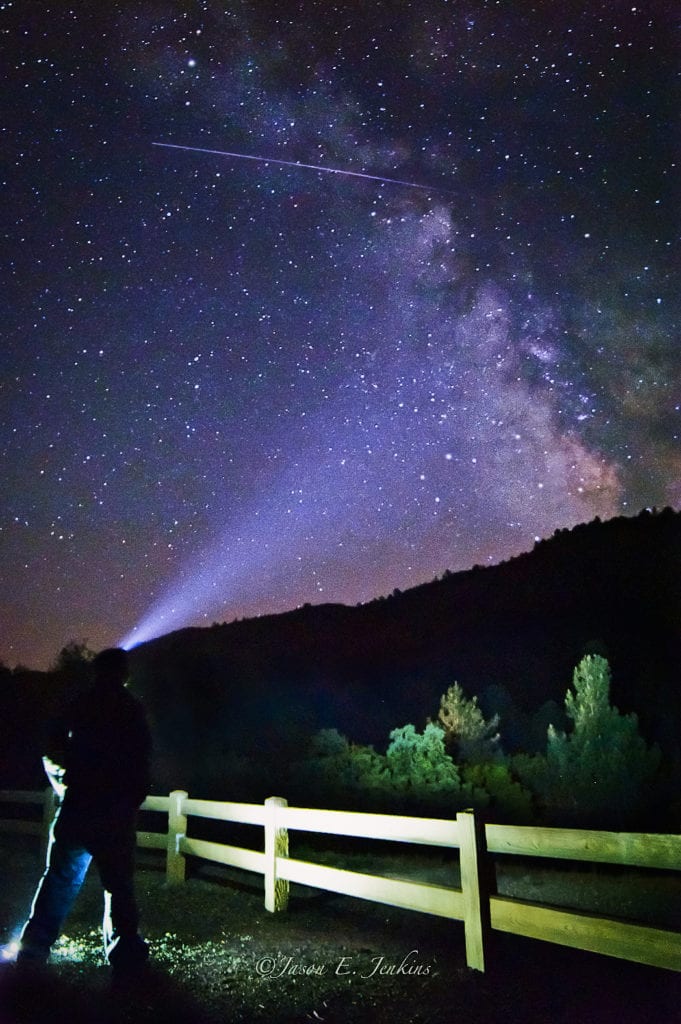The Month of May affords stargazers multiple opportunities to watch amazing celestial events.
Eta Aquarids Meteor Shower
The Eta Aquarids shower is capable of producing 20-30 meteors per hour and will peak in the pre-dawn hours of May 5-6. Although this shower is not known for producing fireballs (super bright meteors), it is nevertheless, an eye-catching display. It is one of two meteor showers that are remnants of Halley’s Comet.
The meteors will be found in the direction of the constellation Aquarius. To view these meteors, look toward the eastern sky during the last few hours before dawn, starting at around 3 a.m. The Moon, which will be bright, should be low in the sky. Focus your view half-way up in the eastern sky. You should see the meteors shooting upward from the eastern horizon. the following link will provide maps. https://www.timeanddate.com/astronomy/meteor-shower/eta-aquarids.html
Last Supermoon of 2020
The next Full Moon will be May 7. It will be the last “Supermoon” of 2020. This Moon is also known as the Flower Moon, Corn Planting Moon, Milk Moon, and the Vesak Festival Moon.
The Conjunction of the Moon and Jupiter
The Moon will be passing 2 degrees,15 minutes to the south of Jupiter in the pre-dawn hours of May 12. Locally, this celestial couple will be visible in the morning sky, rising at 1:59 a.m. They will at that point, at 7 degrees altitude above the southeastern horizon. They will reach the highest point at 5:59 a.m., 33 degrees above the southern horizon.
The Conjunction of the Moon and Saturn
The Moon will be passing 2 degrees, 40 minutes to the south of Saturn in the pre-dawn hours of May 12. Locally, this celestial couple will be visible, rising at 1:16 a.m., and will reach an altitude of 33 degrees above the southern horizon.
The Conjunction of Moon and Mars
The Moon will be passing 2 degrees, 45 minutes to the south of Mars in the pre-dawn hours of May 15. This celestial couple will be visible, rising at 2:45 a.m., and will reach an altitude of 32 degrees above the southeastern horizon before dawn breaks at 6:02 a.m.
The Conjunction of Venus and Mercury
Venus will be passing 0 degrees, 53 minutes to the north of Mercury. The pair will be hard to see as they will appear no higher than 13 degrees above the western horizon, becoming visible at 9:44 p.m. They will set at 10:04 p.m.
The Conjunction of the Moon and Venus
The Moon will be passing 3 degrees, 41 minutes, to the south of Venus just after dusk on May 23. The pair will be difficult to see as they will be no higher than 11 degrees above the northwest horizon. They will become visible at 8:49 p.m., setting at 9:55 p.m.
Comet SWAN
A newly discovered comet, Comet C/2020 F8 SWAN, could provide a dazzling display. The comet is now faintly visible with the naked eye or binoculars but will continue to brighten in the following days. The comet has a green-glowing coma (head) and an unusually long, detailed, blue ion trial (tail). It should be remarkably bright and has been dubbed the “Best comet in years.”
The comet will pass closest to the Earth on May 13, and will be closest to the sun on May 27. To find the comet, look for the constellation Aquarius, where the Eta meteor shower appears to originate, in the eastern sky. For more precise, up-to-date info on where to look for Comet Swan go to TheSkyLive.com











